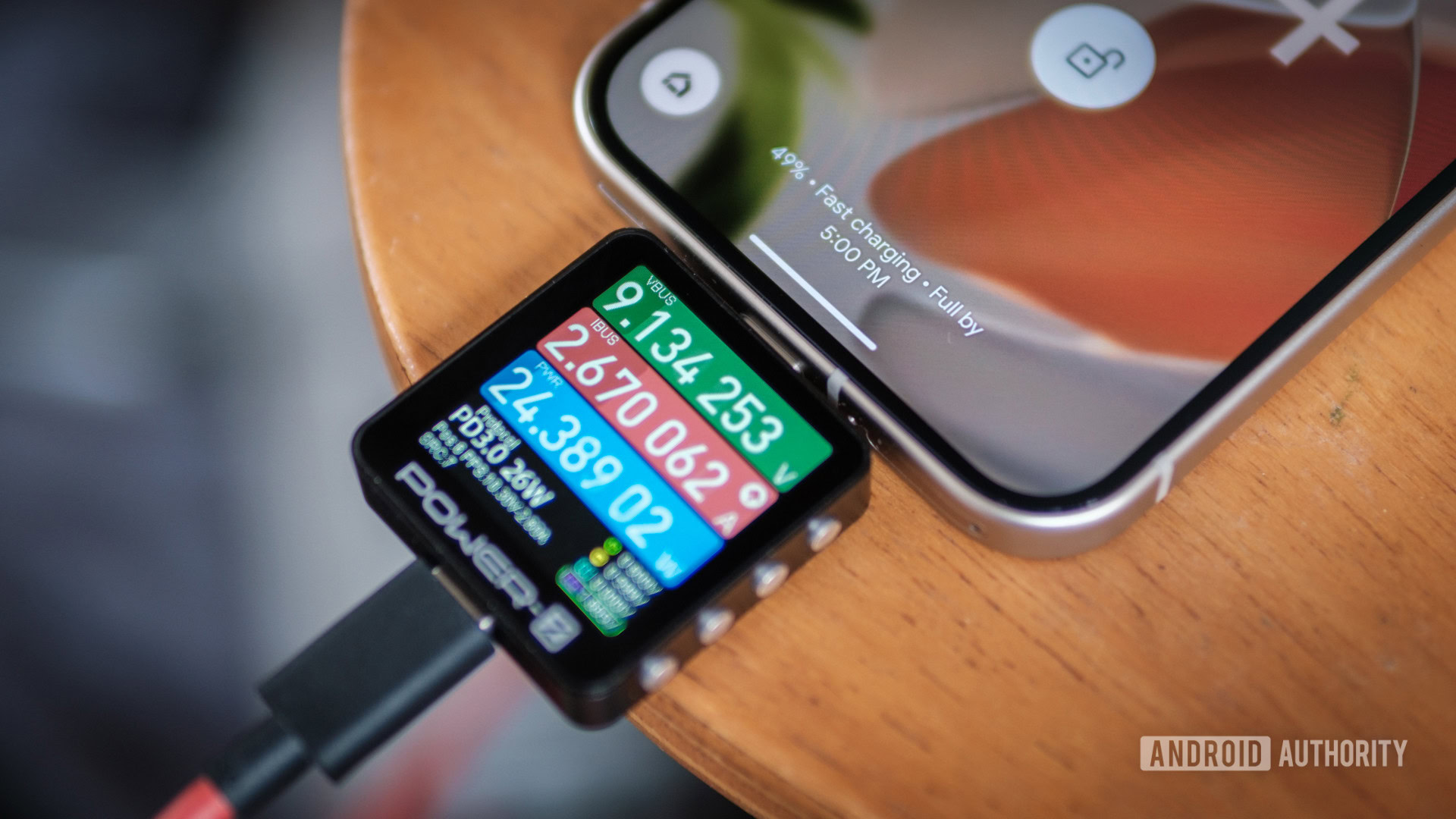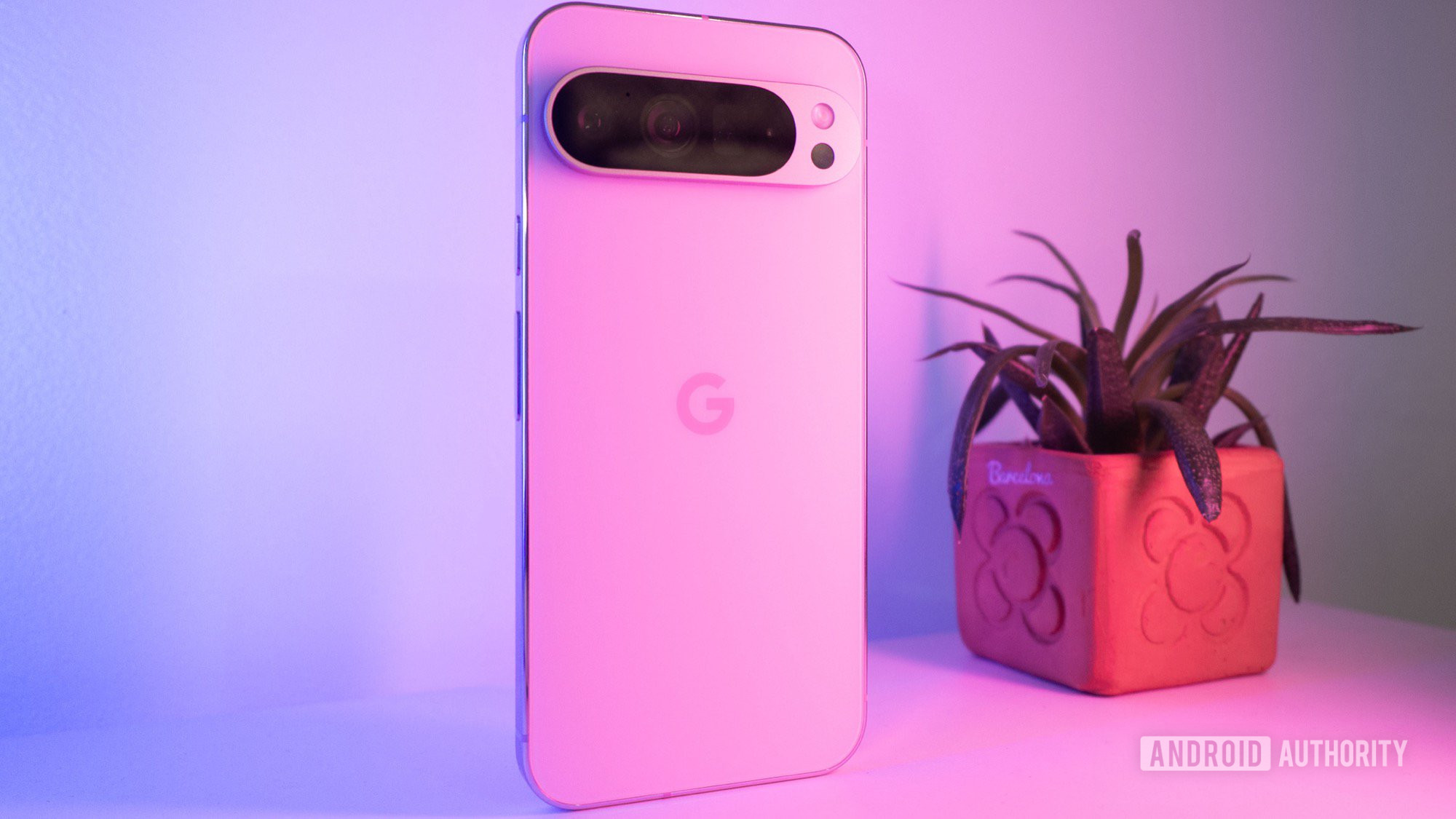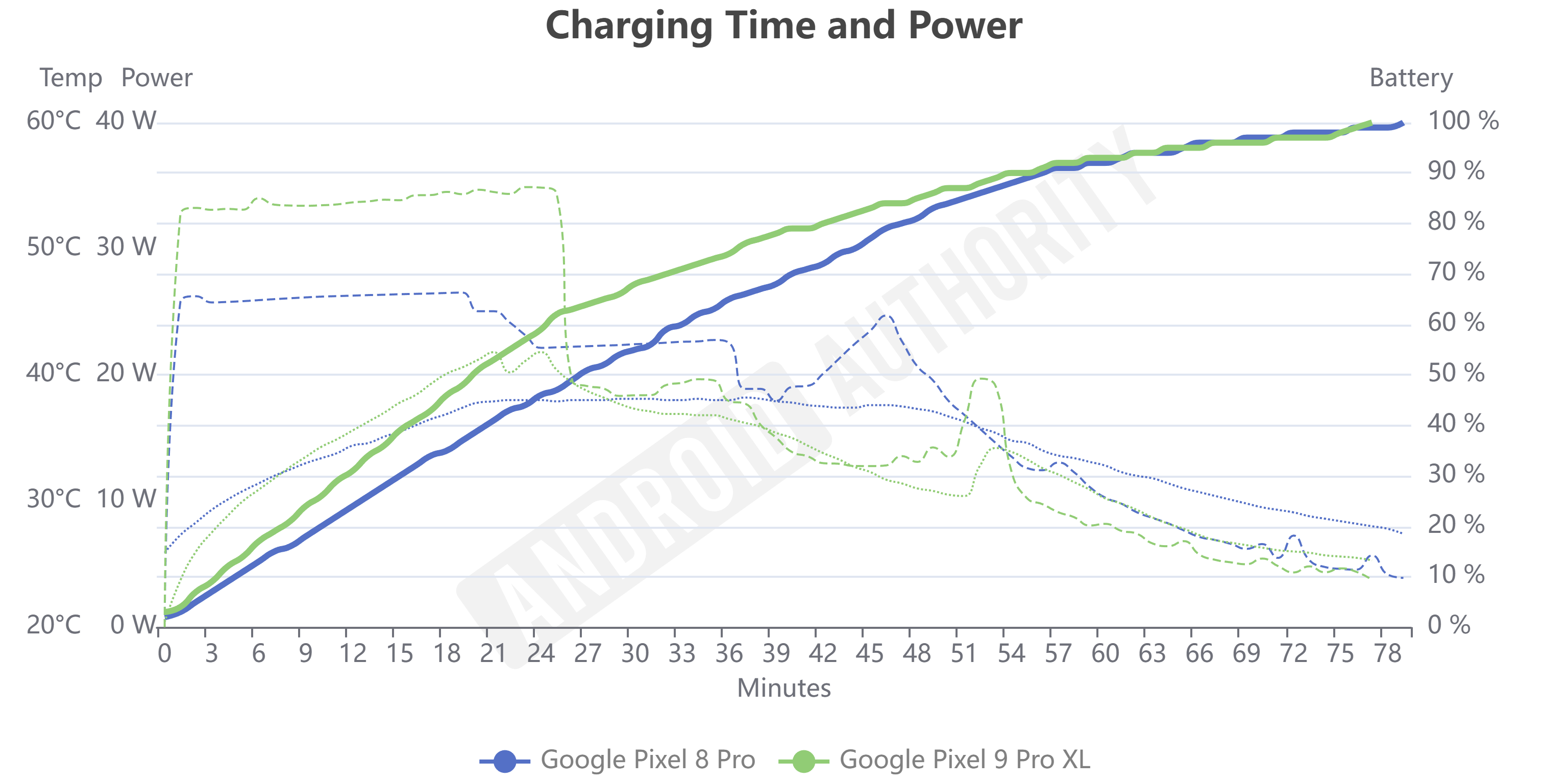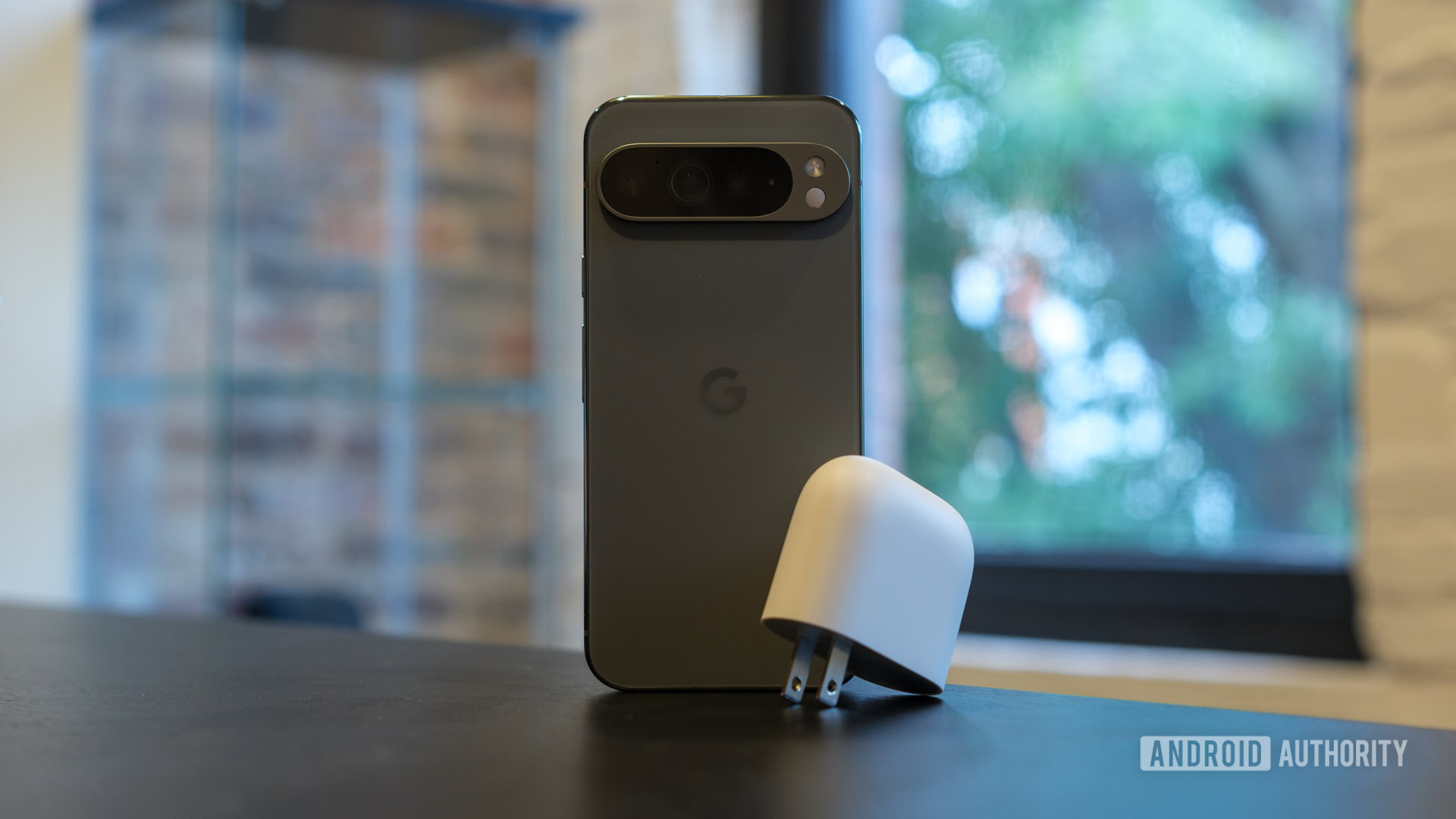
Robert Triggs / Android Authority
Remember when I said I was going to buy Pixel 9 Pro XL Because it charges faster? Well, it looks like I’m about to eat my words. Plugging of Pixel 9 Pro XL to quick charge sent Android Authority Team down a rabbit hole with cables and chargers to find out what works and what doesn’t. Google’s latest flagship has made USB-C even worse than it already is.
Although it is true that Pixel 9 Pro XL is a good deal faster to charge important milestones, thanks to the increased 37W power draw, it turns out that after all it is not so fast to full. Worse, you probably won’t be able to hit top power without buying a new charger – which I am not prepared to do (again!).
Yes, the phone still uses USB -power delivery PPS; There are many plugs out there for it. Yes, it only requires 37W; Again you will find many chargers who can push much more power than that. If you follow the general wisdom of Select the right chargerWill you be forgiven to believe that you are covered by the assortment of Best wall chargers on the market. However, Pixel 9 Pro XL specifically requires 18V at 2A for quick charge, a much higher voltage than 9-10V used by most other PPS smartphones, including Google’s other Pixel models, including last year’s Pro, and Samsung’s 45W Galaxy S24 Ultra.
Pixel 9 Pro XL fast charging explained

Rita El Khoury / Android Authority
To find out what works and what doesn’t, I tried a selection of our former favorite chargers who matched the seemingly important requirements, but had no luck with the Pixel 9 Pro XLS 37W effect level. Instead, I was truncated at 27W (9V/3A), mainly the same old power level as last year’s Pixel 8 Pro and 9 Pro. I took a 5A cable for XL to see if it could maximize the current output, but to no avail. Fortunately, Pixel 9 Pro can hit near the announced 27W power level when it is still charged at 9V/3A.
Pixel 9 Pro XL needs 18V/2A over USB PD PPS, but good luck researching that information.
It was only when I ordered Google’s new 45W charger and a selection of diligently examined third-party plugs that I found a few able to click on XL for 37W charging. One thing these plugs all had in common are 20V USB PD PPS support, but good luck to find what is listed at most product sites. Marks hardly reveal which charging protocols their plugs, let the specific power levels. Although consumers want to waste hours researching this information, they cannot.
To throw extra confusion in the mixture, Google’s popup “fast charging” tells you nothing about your plug actually charging Pixel 9 Pro XL as soon as possible or not. Even to see full charging ETA will not tell customers if their plug works optimally. The phone seems to take about as long as the Pixel 8 Pro does to fully recharge, even when driven on 37W – so “Time to Full” shows about the same ETA, even if you use a PPS plug that doesn’t top it with maximum power. It makes it very difficult to diagnose if a charger works optimally or not. Instead, 37W charging Pixel 9 Pro XL leaves 50% and 75% milestones faster, before pulling back more aggressively on the current for a very slow charging in the final phase. Talk about giving one hand and bringing another.

Robert Triggs / Android Authority
It is clear that this is bad news for consumers and is already making the terribly messy world of USB-C accessories even worse. Just when we thought we had escaped the intricate root of proprietary charging, Pixel 9 Pro XL throws a wrench in the works. I can already hear the shouts: “Why is Pixel XL lades so slowly,” and eager helpers show up with 101 different possible causes. That said, Google is not alone in demanding charging higher voltage over PSS; Asus’ 65W Rog and Zenfone smartphones also use higher tensions for charging. However, the fact remains that these are the exceptions, not the rule.
Why do some companies require high voltage while others can choose lower rankings? Although I can only guess on Google’s rationale, higher voltages have the advantage of releasing less power over cable resistance. It also means that you can get away with cheaper and more common 2A or 3A-classified cables instead of a 5A. The disadvantage is that pulling down tension to the battery level will incur some power loss and therefore extra heat inside the hand set. Also, you can’t use high voltages when charging the final stages of a telephone battery, and that’s exactly what I have observed with XL. It drops to 9V and around 18W or so when the cell hits about 60%.
What hope is it if consumers can still choose the wrong charger after examining power and protocols?
I am not sure that there is a particularly brilliant reason to choose 18V over 9V, especially when we know that high current charging works just fine in other hand sets at higher power level. Maybe there is some internal component restriction. If you want to see USB PD PSS support done correctly, Xiaomi 15 ultra Supports 60W via 20V/3A and 45W via 9V/5A. It is clear that fast charging can be done at both voltages, but it requires extra cycle and expenses (the cheaper Xiaomy 15 is truncated at 27W).
What is the best charger for Pixel 9 Pro XL?

Ryan Haines / Android Authority
If you need a plug to charge Pixel 9 Pro XL as soon as possible, we have tested the Google 45W USB-C charger ($ 29.99 at Amazon), Udreen Nexode Pro 100W ($ 119.99 at Amazon), and Satechi 165W USB-C 4-port ($ 119.99 at Amazon). The usual theme seems to be that PPS chargers with higher watts are more likely to support the required voltage, probably because they are designed to charge portable batteries. But even it’s not a guarantee.
Although you may find a suitable wall charger after some research (remember to check the list of diligently examined Best USB-C chargers For more options) Power Banks are much more difficult to buy properly. I have not identified a single one who shows the output features sufficient to tell whether XL will charge as quickly as possible or not. Ultimately, you are probably stuck with a slower charging when you are out with Pixel 9 Pro XL for the foreseeable future. Depressing is just when you most likely need a quick toppings.
Although Google has not quite made all USB PD PPS plugs I have spent over the last three years gathering obsolete if I buy XL (they will still charge it in a way), I am not prepared to buy a new new wall glass as soon as just to maximize XL’s potential-talk about unnecessary e-wait. I think I save some money and choose the slower charging Pixel 9 Pro instead.

Google 45W USB-C Power Charger
USB PD PPS support
Clean, distinct design
Solid 45W charging speed

Satechi 165W USB C 4-Port Gan Charging Station
Covers all charging standards
Excellent efficiency
Four USB-C ports

